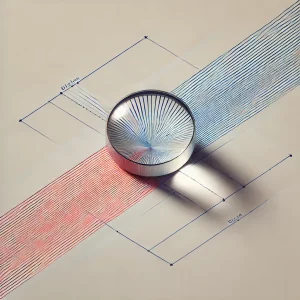In the world of Optronics, SPAD(Single-Photon Avalanche Diode) cameras represent a remarkable breakthrough in photon detection technology. Indeed, these cameras are capable of detecting individual photons, opening up new perspectives in a variety of fields, from ultra-sensitive image capture to advanced night vision, medical and security applications ...
What is a SPAD camera?
SPAD sensors use avalanche diodes and are sensitive to a single photon. When a photon strikes the diode, it triggers an avalanche of charge carriers, producing a detectable electrical signal. This exceptional sensitivity enables SPAD cameras to capture images in extremely low light conditions, where conventional cameras fail.

SPAD camera applications
NLOS or "seeing around corners
The NLOS(Non-Line-of-Sight) technique, often referred to as "seeing around corners", is an impressive technological advance. It makes it possible to view objects or people not directly visible to the camera.
By using light pulses, such as lasers, and analyzing light reflections from surrounding surfaces, NLOS systems can reconstruct an image of hidden areas. NLOS applications are vast, and include security and surveillance. SPAD cameras can be used to detect hidden intruders and carry out rescue operations in dangerous environments. They can also help locate victims or navigate through obstructed spaces. What's more, in the field of autonomous driving, this NLOS technique offers possibilities for anticipating the movements of objects or pedestrians hidden behind obstacles. This effectively enhances road safety.
Photography and videography
SPAD cameras make it possible to capture sharp, detailed images even in dimly lit environments. This revolutionizes night photography, enabling photographers to capture details invisible to the naked eye without the aid of artificial lighting. What's more, these cameras enable high-definition filming in minimal light conditions, opening up new creative possibilities for filmmakers.
Night vision
When it comes to security and surveillance, SPAD cameras offer unrivalled night vision performance. They can monitor poorly lit or totally dark areas with remarkable clarity. This enhances security in critical environments such as sensitive infrastructures, borders and military zones.
Medicine and Biotechnology
In biomedical imaging, the ability of SPAD cameras to detect extremely weak signals means that cellular and molecular structures can be visualized with unprecedented precision. This is particularly useful for fluorescence techniques. It is also the case for cell dynamics studies, where the detection of weak light emissions is crucial.
Quantum communication and scientific research
SPAD cameras are also used in quantum communication and advanced scientific research. Their ability to detect individual photons makes them ideal for experiments requiring high-precision detection. Examples include quantum correlation measurements and quantum photonics experiments.
Advantages and challenges of a SPAD camera
Benefits
- Extreme sensitivity: Ability to detect single photons, offering exceptional performance in low-light conditions.
- Time resolution: Offers excellent time resolution, essential for applications requiring fast, accurate photon detection.
- Versatility: Can be used in a variety of fields, from artistic photography to scientific research.
Challenges
- High cost: SPAD cameras are still expensive to develop and produce, which may limit their accessibility for certain applications.
- Technological complexity: SPAD technology is complex, requiring specialized equipment and expertise for its deployment and use. But Imasolia is here to help!
Conclusion
A SPAD camera is an advanced photon detection technology, opening up new perspectives in many fields. Its ability to detect individual photons with unprecedented precision makes it indispensable. This is the case for applications requiring extreme sensitivity and high temporal resolution. Although its cost and technological complexity pose challenges, the potential benefits of the SPAD camera make it a promising technology for the future.
For more information on cameras used in Optronics and Photonics and their applications, feel free to explore our site and discover how they can transform your business.
To find out more, contact us!



